Flagstone patio--mortared vs. gravel/sand?????
We need some advice on laying a flagstone patio...
We originally planned to lay the patio on a gravel and sand bed with the joints filled with sand. However, the guy doing the landscape design said we need to mortar the patio if we plan to use it for entertainment purposes, such as having a table and chairs on it. He states that if we do not mortar it we will chip the edges of our flagstones and it will eventually need to be redone.
We are located in the northern California foothills, where the weather varies from mild winters to hot summers, with occasional freezes in the winter months.
Any recommendations would be greatly appreciated.
Comments (64)
AshaK
20 years agoTo do this, you have ot take the flagstone OUT and lay it on a concrete slab. Just mortaring the joints will not work - they break and crack and crumble
cracking and crumbling is not always a bad thing. If you grow moss there it actually helps... though of course a weed may find it's way to the ground and need to be weeded. You'd need the slab if you want to insure againse subsidence etc. but if it is only to resist the washout of sand that isn't necessary.j What would be easier than a mortar joint would be .25 inch minus gravel... that will hold in the rains and if it is basalt it will naturally be rather grey in appearance. These days people are learning the advantages of even laying stone in .25 -, (one quarter inche with the fine grains, the minus)minus rather than sand. All sand does not compact well - some sand is rather round while other sand is sharp... most sand in the US seems to be roundish and so it resists compatction. Another material for setting stone can be recycled ground concrete, ground to .25 minus.
mustangsally52
20 years agocan i just lay my flagstones in my very sandy soil and use gravel in between and then plant moss or low growing grass between the stones. I'm in south florida where I don't have the issue of frost.
Related Professionals
Baltimore Landscape Architects & Landscape Designers · Forest Park Landscape Architects & Landscape Designers · Otsego Landscape Architects & Landscape Designers · White Oak Landscape Architects & Landscape Designers · Belvedere Park Landscape Contractors · Bethel Park Landscape Contractors · Hickory Hills Landscape Contractors · Post Falls Landscape Contractors · Wethersfield Landscape Contractors · Carson Fence Contractors · Lockport Fence Contractors · Park Ridge Fence Contractors · Richmond West Fence Contractors · Silver Spring Fence Contractors · Washington Fence ContractorsAshaK
20 years agodepends, if you laid a stone flat on the beach, you probably wouldn'ty expect it to be very flat the next morning... when laying in sand of any type you need stones that are thicker and more broad to resist shifting when you step on them.
Also if they are thick enough and placed close together (.5 to .25 inches)the grout joint will help resist movement.
-Amich_in_zonal_denial
20 years agoI'm wondering if those who are installing their dry lay flagstone patios for the first time realize what the sand bed is actually needed for ?
( obviously excluding Asha and LaLazyG. )It's a setting bed. Used to assist the mason/ installer in plumbing and leveling out unevenly guaged stone.
Beach sand is not acceptable for this application because is has rounded edges. It can be used in a pinch if your setting bed is very thin - like 1/4 to 1/2" inch and preferably with a tad bit of a binder sifted in to keep the particles from shifting.
Always spec and use 'sharp' sand. It compacts well up to a 5 or 6 inch thickness , anything more than that and it has enough mass for a downward load to sift the particles .
For the best results the setting bed (sharp sand ) should be spread ontop of a non organically humic based ( because of decomposition = sinking ) of hard packed class II aggregate which is a combination of fines ( stone dust ) and sharp angled small rocks ( you can spec various sizes but the most common is 3/4" )
Your setting bed will eventually wash out if it is not contained on the outer perimeter.
This is why masons do one of several means to 'lock' in their setting beds ; A) install a perimeter footing, much like a curb ,
B) install a raised border of sorts - usually stone but sometimes wood or metal or plastic has been used.
C) mortar the outer perimeter flagstone joints as well as omit any escape joints between the sub base / sand and flagstone by damming it up.The sand will evenually erode and filter down thru the subbase ( the highly compacted class II layer ) for this reason some masons install a filtration layer that allows water to percolate down but fine particles cannot.
This erosion seepage problem is caused by several factors and depending on your climatic location wll occur faster in some areas of the country than others - places with frost heaves , locations that receives very heavy fast hard down pours, flooding, excessive downward and sideward pressure from furniture/ people/ pets over a period of time , Inadequate sloping and or planned drainage exiting, ect....The surface area of your flagstone patio is only as good as the effort that you put into your subbase.
colbyj
Original Author20 years agoMichelle,
Is fill sand ok? This is what the stone yard recommended.Thanks.
Colbymich_in_zonal_denial
20 years agoFill sand is a generic term . Fill sand in Arizona will be different from fill sand in New England.
Depending on where this fill sand was dredged from ( Arroyos , creek beds are common dredging areas as is some beach areas and low lying areas within the quarry itself. )Ask the supplier if it is Sharp or Coarse sand vs. rounded or beach sand.
colbyj
Original Author20 years agoThanks, Michelle. I confirmed with the stone yard that it is a coarse sand, so I should be ok. Flagstone comes tomorrow, so the adventure begins....
lazy_gardens
20 years agoMich -
Thanks. Yes, if I had a less casual attitude towards my atrium I would have added a layer of sand. It makes levelling the rocks a lot easier. Butthere is vrey little difference between my hard-packed dirt and a well-tamped sand bed.Mustangsally -
"can i just lay my flagstones in my very sandy soil and use gravel in between and then plant moss or low growing grass between the stones."Certainly ... the whole purpose of a cement slab and mortar is to minimize heaving in freezing climates. You will have to level the area and make sure it's well-packed. YOu might need ot use more sand under some of them to make the tops level.
BradSwanson
20 years agoLive in Zone 3, north central Minnesota. Am going to construct a flagstone patio. Only have about 4 inches of top soil. Below that is pure sand, no clay, loam,black dirt of any kind. This sand goes down for at least 15 feet, maybe as far as 50 feet. Do I need to have any sort of gravel base or can I just pack the existing sand and lay the flagstone on it?
lazy_gardens
20 years agoBrad -
I'd scrape off the topsoil, pack the sand well, and lay the stones on the sand. You might have to bring some sand in to level it or raise the level fo the patio, but it sounds like you have excellent drainage.RossandBeth
20 years agoHi,
I'm installing a flagstone patio using redstone from one of the many quarries down the street. From the other messages it looks like my installation is different. For starters I'm using pea gravel not sand for the majority of my 4" base. And I'm cutting each piece to fit as close as I can make it.
I choose this method because I didn't like the way this redstone looked with mortar (colored or not), I didn't like gaps between the pavers creating an uneven walk, the sand between the pavers was messy and got into the house, and I wanted to be able to walk in bare feet on the pavers so that meant I did not want to use cruser stone (the breeze) as a filler.
When I bought this house the front side walks used small (1.5'x1.5') pieces of red pavers that looked to be as old as this house, 30yr. I noticed that the erosion occured not on the edges but that the pieces split creating two or more stones the same 2 dim size but thinner.All of my "I don't like reasons" above came from these side walks, which I eventually removed and are currently re-doing. I use a lot of this older stone for small retaining walls for steps and cut in pieces between larger paver stone 2'x3'. So when friends ask what am using between the pavers I answer nothing.
My daughter was walking across the side walk in bare feet yesterday and descovered how great it felt, that made my day.So far it been a real trip working with this red sandstone, I find that I can pretty much cut any shape I want assuming I keep note of fractures in existing piece and breadth of the cut, (can't get to narrow). I score every side and then get to work with my chisel and hammer, 20-30 hits, flip and repeat, flip repeat, etc. I find that you have to judge the force of the hammer carefully, getting fustrated and wacking gets costs time and money and it's been a lot of each.
--Rosspootypantz
20 years agoI have two doggies, one loves to dig her slender long legs into the spaces between my sand-based flagstones and make piles. I'm hoping she grows out of this (she's 1 yr) but in the mean time I have tried growing moss, and recently, putting down large pebbles (1/4" - 1"). I love the look of the pebbles and I can only see one solution: put some type of permanent product down and imbed the small stones.
So, my question for the forum is:
1) What product can I use to "pour" in between the flagstones that I can imbed the pebbles in that will "stick"
2) Or, any other suggestions????Thanks for entertaining my problem. It's a big one to me.
Warmest Regards to the group,
Patty
bulldinkie
20 years agoIn 03 we had flagstone sidewalks put in.The one is breaking away already.Here in north with season changes is what did it.Theyre mortared.
JStover24
19 years agoI recently built a flagstone patio as well. I am in NC, for the base I used crushed quarry fines and sand on a slightly sloping area of my yard. At first I used the sand to fill in the joints between the flagstone. This did not work out well, with any heavy rain or high winds the loose sand in the joints would wash away or right on top of the patio itself, making it very uncomfortable to walk in with barefeet. I just recently started "redoing" the joints between the stones, I am clearing about 3-5 inches deep between each stone and brushing in quikcrete mortar. This so far seems to be doing the trick, it makes the patio much stronger/sturdier and I can now even walk on it without any shoes on. I like the flagstone look in the more natural sense, the patio is an extension off of a deck built mostly for looks, not for entertaining purposes. So I also like the "rough" lay of stone, not a perfectly level surface. Makes it appear to be much more natural. I have had several friends use sand as the joint filler as well only to be greatly disappointed. The mortar I feel is going to work well and will require less "fill in". I assume every year or 2 I will need to repair some cracks, but I think that is better than having to sweep in more sand after any heavy downpour.
Zonetrap
19 years agoI used decomposed granite, and that stuff after a couple rains, gets super hard, almost like concrete. Pretty amazing stuff.
I like the natural rough look too, that is how we did ours.
HobbyHeidi
19 years agoHow do I make a pattern? I want the patio I build this weekend to fall where it may as the shapes take form. I don't know if I should start digging in the middle and work my way outward...I have a pallet full of flagstone, kinda medium to small pieces ranging from 1/2 and inch to 3 inches, 4 inches thick at the most. I plan to use left over sandbox sand. I also plan to plant some Irish moss between the cracks when done. I don't want my patio to be square, rectangle, orval..you get the idea....any advice? I am a first-timer at building one.
Zonetrap
19 years agoI bought the green steel edging from Home Depot. It comes in 10 ft lengths, I think its 4" high. We built a shape out of that stuff. Its very flexible.
Definitely make a shape first. You need some sort of edging, especially with sand.
zeuspaul
19 years agoDon't start in the middle. Work the edges first to develop good lines (edges) and then fill in between.
OUbrandy
19 years agoSummer of 2003, we hired a contractor to build us a flagstone patio. The contractor used stone pavers as a retaining wall due to my yard being sloped. A sand base was used to lay the flagstones. Mortar was used in between the stones. Now, one year later, the mortar is breaking apart from the flagstones and crumbling. The flagstones on the end of the patio are completely loose and I fear someone will get hurt. Surprisingly, we have not lost very much sand. I do not want the expense involved to pour a cement foundation in which to lay the flagstones. Can I do anything else??? Thanks for any advice!!!
lazy_gardens
19 years agoOUbrandy -
Call the contractor and let them know they have a job to fix.It's possible to build a flagstone patio on a slope, but the retaining wall has to be well-built and the base has to be thoroughly compacted (layer by layer, with a machine).
OUbrandy
19 years agoThank you, Lazygardens!!! I am very frustrated because the contractor is finding all sorts of reasons to put me off and not come back to my home. Unfortunately, I am meeting with an attorney this week, an option I didn't want to have to pursue.
calisto
19 years agoThree years ago, I created a 500 sq.ft. arizona sandstone front courtyard surrounded by a planted screen and beds. I hand leveled my patio area and laid a weedblock barrier and covered it with a four inch deep bed of fine grade sand - the one recommended by the supplier of stone. Use the supplier's sand, not playground or sandbox sand, it won't hold it's shape and form a firm bed to support the stones. Three years later the sand is firm, the stones beautiful but something just wasn't right. I use benefin (sold as AMAZE)in the spaces between the stones - I have never had any weeds. I have lived with it on sand and have hated it. Dirt is tracked into the house and I'm forever cleaning.
Recently I poured a six inch by six inch valley of mortar surround around the entire perimeter of the patio then mortared between all the stones with an already colored mortar. Now each stone has a reason for being. It's easier to wash off, it's easier to walk on, easier to set a table & chairs on - the whole thing is far more functional now.
There is no cement slab, no hardibacker board, only the ground that is hard as a rock to begin with. Now it's a patio that I can be on without having to worry about a chair fallng into a crack or someone tripping. The stone is beautiful and now I wish I had mortared years ago.
This is one approach. Thank you for reading.
calistopatioman
17 years agoI am finishing putting a retaining wall about 2.5ft tall and i plan on making a patio with flagstone, but dry laying them with about 2 in of sand beneath it and about 2ft of soil beneath that. I was going to make the flagstone as tight as i could and fill in the cracks with sand...is there any concern with that? Any advice how to level a 20 by 25 ft patio before taking a plate compactor to it? I also live in the chicagoland area with warm and very cold weather. ANY CONCERNS about anything that i describe...thanks for the advice...
moonchildani
17 years agoI've done two different types of flagstone patios- love both. And being a woman of 5ft and doing it all myself ..a great project I could handle with min difficulty~
The front offsets a pea gravel courtyard, so I used a silver toned flagstone. After leveling, I laid down a weed barrier, then laid out my puzzel piece of the flagstone, butting up the edges close together. To solve the problem of the different depths of the flagstone, I kept a pail and shovel of pea gravel handy to lift up or remove to make the patio all level. When satisfied with the look, I then mixed pea gravel with a light dusting of quick cement and swept in between the flagstone. Then watered down. Later, I removed some of the rock/grout to insert small steppable plants here and there to make the patio blend into the courtyard garden. When I rake up small debris from the garden, I redistribute pea gravel all around, always creating a natural relaxed look to my front courtyard patio.
In back I wanted to do an outdoor kitchen/dining area. I leveled an area next to the deck with gravel,then crushed granite,packing down a hard surface also making sure it was above water level. (Oregon rain can create ponds where not wanted)Afer purchasing island grill and patio set, budget didn't allow for full flagstone patio set in motar, so next layer was a good garden blend, packed down as well. Then I chose a sandy brown color of flagstone, which blended colors from the teak furniture, the fencing, deck and marble topping of the grill unit. Also had some silver stone left over to reflect the stainless steel. So laid that out with large pieces together in the main walking areas and chair placements, non traffic areas wider for plant placement. Swept in more garden soil.Watered down the finished laid stones, making sure settled. Then filled in the cracks with steppable plants that became solid patches. If budget would've allowed, probably would've filled in with motar but loved the effect I ended up with as the patio borders also a Koi pond, so it still keeps in the theme of a relaxed grotto effect. My little paradise..always in progress :) ~ Anisandyself
17 years agoI am planning to lay a flagstone patio and walkway, so I've been asking everyone who knows anything about flagstone, questions....lots of questions. The general consensus seems to be that the stone needs to be mortared/cemented in order to put furniture, etc. on top. This is an area that is high traffic in/out of the house, so I don't want something messy. I'm planning to put 3" of crushed granite down, then a half inch mortar bed (actually portland cement mixed with mortar sand). If someone else in Texas has done this, I would love to hear your feedback. Thank you so much.
bailey_09
17 years agoSandy, I've installed at least a dozen flagstone patio's in the Houston area in the past 5 years and they have all been large to very large 1 1/2" - 2"thick stones on crushed granite gravel and sand; 1/2 have been grouted and 1/2 granite gravel fill. All the patio's have had seating and high traffic walk areas and I have not had any problems with movement.
If you are using small stones then you may need to anchor them. However you can do that by dry sprinkling the portland on top of the sand before you set the rock.
Personally, in seating areas I prefer to use very large flagstones.
organic_camelia
17 years agoCan anyone clear this up for me please?
I am going to dry-lay flagstone in my 320 sq ft patio and am confused about establishing the proper base. Living in the Dallas-Ft. Worth area, I am not concerned about freezing, so how far do I need to dig? I have read that I should pack at least a 4" gravel base, then 2" sand, then flagstone. How thick should the flagstone be? 1-1.5"? 2"? If I lay 2" stones, do I need to have as deep a base? Needless to say - the price of my stone may double depending on the answer. I recently was told that a couple of inches of sand as a base (and no gravel) is sufficient with 2" flagstone but I just don't know if this will be durable enough (at least 5-10 yrs). We will edge the patio and put down landscape fabric, too, and at the end fill the joints with decomposed granite.
Thanks in advance to anyone with insight!
rtheidler
17 years agoI live in California and our yard that was not growing grass after 3 attempts of replacing new sod, so we decided to redo the entire backyard. We wanted a clean look and also a larger area for entertaining. So my Husband and I purchased flagstone to cover 1000sqft, it took a 5-6 weekends to finish. These stones weigh a ton it took two strong people to lift one piece sometimes, they were the thicker stone, 2-2.5 inches. We were told it would be better to lay in sand and they would be more stable. We didn't want spend more money to pour concrete, put drains in and then lay the stone on top, so we opted for sand setting.
Now that it is done, I find that maybe we should of done with the mortar instead. We used much much more sand then expected. The surface of the stone always looks dirty because the sand and especially since it's a large area sometimes people get there heels stuck in between them. Our neighbor has a huge ficus tree that drops berries and leaves that would get stuck in between. I find myself always sweeping outside. We don't have problems of them shifting too much, just occasional small pieces do come up. I think sand setting will work better for small areas but not large patio areas, we are going to mix some dilluted morter mix and pour them in between the joints, hopefully it will help the sand stay in place. I don't mind that there will be cracking, I just hate the having to sweep and getting things stuck between the joints. Rosa
michelle2yard
17 years agoI am planning to lay a flagstone patio and want it mortared so to use it for entertaining and have it be a "barefoot" patio. I'm in a zone 5 area-Utah with a fair amount of snow and freezing. Our plan is to lay down chicken wire in the middle of a sand and cement mixture (dry), place the flagstones (varied in sizes) on top, water to set the cement, and finally mortar between the stones. A couple questions: 1) Do you think this dry cement method with the chicken wire will hold up to the freezing and help prevent the mortar from cracking? 2) Any suggestions of getting a professional-looking level mortar without smearing it on the flagstone?
justadncr
17 years agoWe all of you say mortered do you mean mixing 1 part portland cement with 3 parts sand. Putting it in dry then watering???
michelle2yard
17 years agoYes, essentially, although we are planning to wet the mortar mix before putting it between the stones to make a stronger bond.
justadncr
17 years agoWhat would happen if you used dry morter in between the flagstone instead of sand? My flagstone is all set out over 4 inch of rock then 2 inches of sand. we put the weed barrier down next then the flagstone. I dont know what to put between them now. I live right on the Oregon coast. No freeze and my soil is pure sand to start with. Ideas.
retwoner9_azteca_com
17 years agoHi michelle2yard,
I'm also living in Utah and I'm looking at installing a 10x16 or so flagstone patio next summer. Have you installed yours yet? What did you do?We already have a concrete patio that we want to build over and extend a little bit. What do you think would be the best way to do the patio and have a natural look? Is it possible to build a raised stone patio over this, about one or two steps high, without having to use a ton of concrete? Thanks!
silbc_email_unc_edu
16 years agoWe just had a flagstone path laid over pea gravel and joints were filled with fines. The fines are coming out of the joints and spreading over the surface of the flagstone making walking barefoot difficult and tracking fines into the house. What can we do to keep the fines in the spaces between the joints?
dougy2040
15 years agolook on the internet, for polymeric sand or lock joint sand. It will stay in the cracks, but can also be moved around and smoothed again and again. It is not affected by getting wet or freezing. When it gets wet and drys out, it stays firm. Then it can be broken loose again, to sandy powder and moved and swept into the cracks again or repositioned. Next time it is damped, it firms up again.
Probably is available a masonry supply storedeckedout
15 years agoI have a question about replacing my old wood deck. I would like to replace it with a raised patio. I know there are some synthetic stone like materials that can be used. The deck is 4-6 feet off the ground. I've contacted some local deck people but they only deal with wood. I think the raised patio with the synthetic stone like material is a new trend and can't find much info.
kaydye
15 years agoI have a previously built patio of flagstone with pea gravel in the joints (large joints in places, jigsaw pattern). I have decided I don't want the pea gravel anymore, I want a more finished look that is easier to sweep clean and to walk on. I have been thinking about using the polysand, but have read a lot of negative comments from landscapers who used it, saying it has to be absolutely dry and the dust tends to stick onto things and not come off, etc. Now I am having second thoughts. After reading all the above posts, I am wondering about crushed granite and sharp (torpedo sand). I also read good comments about a product called stabilized crushed stone by a Canadian company called Envirobond. I would have to find a distributer about 2 hours away to get that. So you can't just sweep a sand/portland mix in a area the freeze/thaws and expect it not to crack?
Kayearlybirdz5b
15 years agoKaydye, I live in your zone too. Short answer to your question is no. I bought my house two years ago.. the owner installed a flagstone patio with the sand/portland mix just before selling. After two winters, the thing is cracking apart, to the point that parts are unstable and a trip hazard. The joints seem wide to me, about 2.5 inches.
I found this thread, doing research about how to replace it with something that will last better. I am probably going to go with the sharp sand and crushed granite. I think the cracks look terrible. My house is also built on a hillside, so between the slope and freeze/thaw cycle, even a cement base for the stones would eventually crack.kathypdx
15 years agoLooking for moonchildani, if she's still around ... I'm also in Portland and want to ask a couple questions.
Or, for anyone out there, I didn't put a border around my patio area. Already have it dug out to about 3 inches deep, weed barrier down, quarter-minus over that, then sand. Can I assemble the flagstones, fill in the gaps with sand and then later put a border around to keep the sand from migrating out or washing out during Portland's rainy winter?
The patio's against the house, so it has a slope away frm the foundation and toward the backyard grass. The finished flagstone area shouldn't be higher than the level of the grass itself, will that hold the sand in?
sierra3
15 years agoI just built a quartzite patio in Reno, NV. I used the new product, polymeric sand and it worked great! I got the sand in 60 lb bags for $20 a bag from Home Depot. My patio is 9X27.5 and I used 5 bags. It looks like regular sand and sweeps into the joints. You then mist it 3-4 times waiting about 10 minutes between each misting. The water activates a weak polymer glue and locks the sand granules in place. We don't have much problems with frost heaves here, but if a stone moves you can pull up the sand in chunks and step on it or use a shovel to get it back to a granular stage, sweep it back in place and re-mist. Although the polymeric sand sets up pretty hard I don't think it would stand up to a leg from a patio chair, etc., so we plan on getting sled style chairs for the patio. It does do well with walking on it and the sand stays put! So far we are very happy with it. I'll let you know how it goes thru the winter. We get very little rain here but we do get snow.
PMeans123_hotmail_com
15 years agoI have some polymeric sand that I've not tried yet, but I will say that with the stone dust that we used to fill the gaps, it does get a bit messy, as it moves around under use and has a bit of an unfinished look, here's some pictures and my article on how to build a stone patio (link below).--Peter
Here is a link that might be useful: How to Build a Stone Patio
fletcher_tc_gmail_com
13 years agoWe live in Arizona and laying a flagstone patio...the joints vary in width, some fairly wide and others not so wide. We would like to cement it a color compatible with the stone...what is the best product to use for mortaring the joints?
tls2train_aol_com
13 years agoWe bought a house in which a large courtyard patio of irregular stones had been created by cementing the stones over an existing concrete base. Unfortuately, the installer didn't know what he was doing and created a smaller area smack in the middle of the patio, which was below the grade of the rest of the patio by an inch plus or minus. The result is a lake in the middle of the patio every time it rains. I can't afford to tear the whole thing out, but is it feasible to rip up the stones in that middle area and replace them with similar stones (the house has a large pile of unused stones) over a sand/gravel bed?
jay21868_yahoo_com
13 years agoTom, I would think you should be able to pull up the stones in the area that is low and raise it with cement or possibly mortar. Might even want to make it 1/2 inch or so higher in the middle and grade it down to the other to make the water run off. Just my .02
chris_brookesystems_com
12 years agoI live in Missouri where we have temperatures both hot and cold. I have dug out my base, approximately 4 inches deep. I would like to do grass in between the stones as I prefer the natural look that I hope that would create. The soil is quite compacted below, but I am not sure what to do next. Should I use a few inches of AB3 (stone dust and sharp edged gravel mix) or sand, or both. Also, what do I do about soil for the grass to grow in? Any help would be greatly appreciated.
lcdavis04
7 years agoDid I miss the answer to Chris_brookesystems_com question? I work for a non-profit. We are planning a volunteer project involving laying a patio and had planned on just planting grass between the donated pavers. Is grass an okay idea?
Glen Cumbus
6 years agoI have a unique situation. I have an area partly with an existing concrete slab and the other part is a brick pavers patio over earth and semi-packed gravel. I'm wanting to do the whole area with flagstone but I'm concerned because the concrete section has a back door with a threshold only 1 1/4 inches above the slab. What I have been considering doing is dry setting the stone over the concrete section, then digging the gravel section down 2-3 inches and using crushed slate to level it. I wanted to have the flagstone cover the whole area uniformly and fill the joints with more crushed slate. Just wondering if:
1. Using 1 inch or thinner flagstone over the concrete would hold up?
2. Using crushed slate as my leveling agent over the gravel section and slate in the joints would work. It seems to pack better than gravel and I've seen gravel used.
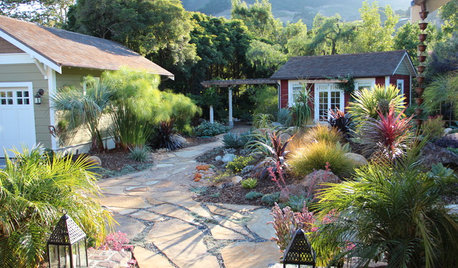
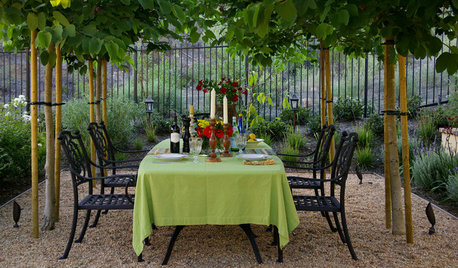
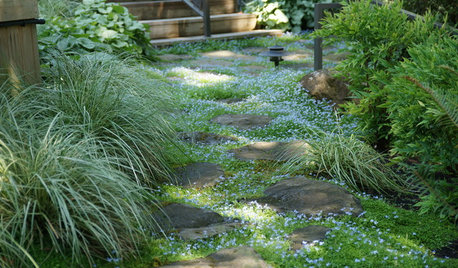
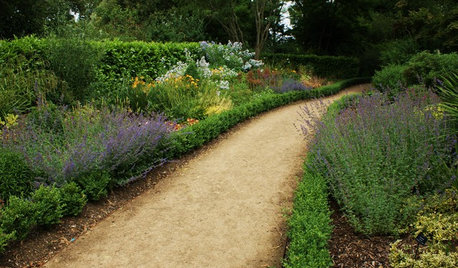
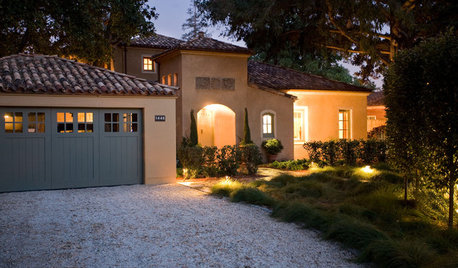
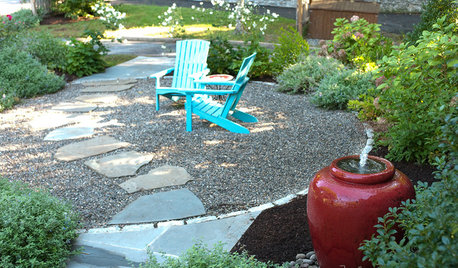

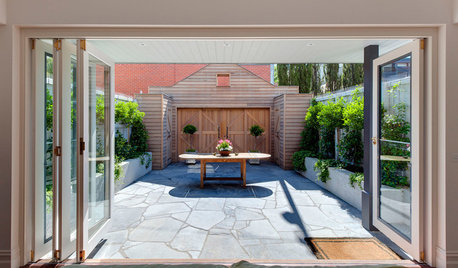
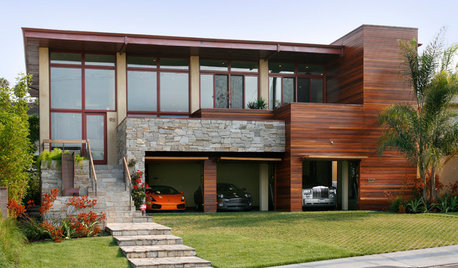








dawgie